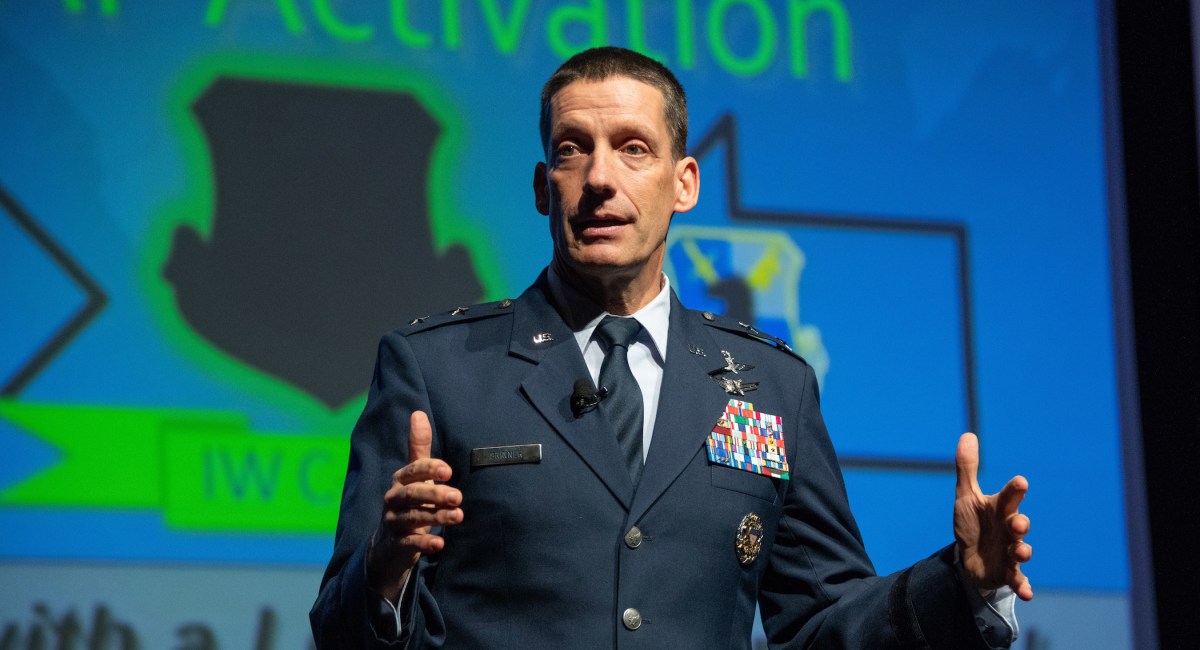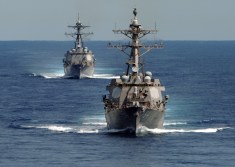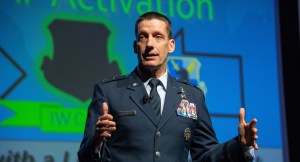DISA seeks to flatten leadership structure with reorganization

The Defense Information Systems Agency is re-organizing its structure to create a flatter agency, responding to feedback that it was too cumbersome to work with.
The agency has doubled the number of centers that oversee a range of directorates from two to four. Each center has its own focus areas and offices working to achieve those mission sets.
Speaking at the AFCEA International Cyber TechNet conference, DISA’s director Lt. Gen. Robert Skinner said the change is intended to reduce what leaders see as a complicated organizational structure that has blocked innovation and industry partnerships.
“DISA’s organizational design is too complex for best value,” he said of DISA’s old structure, which split DISA into two broad centers, one focused on business and another on operations.
The four new centers’ official titles are: the Digital Capabilities and Security Center, the Hosting and Compute Center, the Operation and Infrastructure Center, and the Enterprise Integration and Innovation Center. Each has a host of offices grouped within the centers that will focus on specific areas of their missions.
The reorganization also adds new positions, including those of chief data officer and chief technology officer. The new roles, and broader changes, were created to foster innovative tech development and implementation within DISA.
“This is a deliberate effort to drive after that,” Barnhurst said.
The re-organization includes top-down reviews of all of DISA’s programs. Skinner is dubbing the audits “a day at the spa,” as he sees it as a way to cleanse the organization of redundant efforts or waste.
The changes resulted from feedback the agency gathered that it was not empowering its workers enough nor uniformly applying it priorities. To respond, DISA leaders have tried to flatten the organization’s structure, splitting apart centers and empowering leaders to work on more specific problem sets. Christopher Barnhurst, DISA’s top civilian, led the effort to analyze and reshape DISA’s management.
The change comes as DISA sees turnover in it senior leadership. About five of the agency’s senior leaders have retired in recent years, giving DISA opportunities to change, Skinner said. Other leaders were moved within the agency, like Sharron Woods who went from running the Cloud Computing Program Office to running the Hosting and Compute Center, which will focus on all things compute to include on-premises data storage.
Another priority driving the structural change is being able to deliver reliable command and control within the new Joint All Domain Command and Control (JADC2) framework. The new framework is DOD’s approach to combining data from sensors across the battlefield, giving commanders deeper insights into air, land, sea, space, and cyberspace operations. The change will require new technologies and a range of new policies on how the military handles information. To be a part of delivering those changes, Skinner recognized DISA needed to change, he said.
“As a combat support agency, we cannot fail in the ability to deliver Command and Control to our senior leaders,” he said.
One lynchpin piece of tech is identity mangement tools that can verifying users on a network. Steven Wallace, the head of DISA’s new chief technology officer, will be in charge of leading Identity Credentialing and Access Management (ICAM).
“We will not be successful in the future if we do not have the right identity management,” Skinner said. Other top commanders leading JADC2 have shared similar sentiments on the importance of ICAM to the framework.





